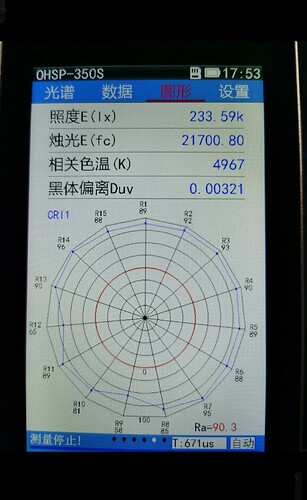Thank you Mandrake! Yes, for our eyes is a good option but for the current I think is not the same.
I see that the modes are repeated, I chose 12 groups instead of 4 modes because it has strobe.
I think I would leave the first 3 modes, and the others just change the % in different ways without repeating.
The other option is a combination of percentages only and the Strobe, Biking and SOS option with an input with pulsations, two strobes in a row, etc. I have it in one of those bad flashlights.
Also Strobe is used only for emergency or fun and a quick jump is ideal double click.
Thus we would have all the modes with a variety of percentages that adjust to any user and with continuous pressing we would have the extra modes, strobe, biking and sos in all modes but you would not access with normal pressing.
Maybe I’m talking nonsense.
+1 on keeping 35% or 40% modes. These are the generally the power levels that allow the light to sustain constant brightness for most of the runtime.
You are correct about the current. But my preference is to have reasonably even level spacing based on what I see, not what an amp meter indicates.
I usually don’t have my meter with me when I am using my lights… ![]()
Is correct, but in some cases I need to know the approximate Amps for duration.
If I have 4000mAh battery and at 35% I consume 1A
I know I have 4 hours… maybe…
Probably not!
You can just measure the current at the different levels and make note of it. But that will change with the voltage of the battery over time. Or just measure the run time at different levels. Or find good reviews with runtime tests.
But, again, this would just give you a very rough estimate. Your cell, ambient temperature, and the specific LED in your light will all impact the results. This would not be any different even if the levels were spaced evenly by current (with a full cell) rather than by brightness.
I just saw the 3X21C listed in the store, is that new? Also, any plans for an SFT-40 version?
Or alternatively an SFQ60 version (also used in NS59v2). It would be unbeatable performance and quality for the price.
Anyone know what bin 70.3 Hi 9050 emitters Simon has? I checked the listing for the 9050 70.3 HI and it has group numbers but not bin information.
They are EasyWhite, so the best way to estimate the tint is by the flux bin. Fortunately, all 70.3hi 9050 are the lowest flux available, so tint should be neutral.
What do you mean by EasyWhite? The rest of that I understood
The CHROMATICITY REGIONS are ellipses, not rectangles, so duv is more difficult to predict. Check datasheet on page 27.
Huh. Seems like a slap-dash way of going about it. Thanks for pointing out the relevant info ![]()
Kinda. It makes sense for illumination purposes, when they want chromaticity close to sunlight. If you want to avoid green tint is not good at all.
But I bet that is very unlikely to have significantly green tint (duv>0.0050) with those 70.3hi 9050 from Simon.
The question is, is original Anduril FW really required, or just a better (logarithmic?) ramping curve + some extra features? It seemed Simon’s previous driver designer was familiar with 8051 architecture (Sonix), so why not use a good modern variant of that (WCH for example) or some other cheap MCU and port the “biggest” / most used Anduril features?
Anduril does a ton of stuff and often does it better, eg thermal regulation and low-voltage protection.
And a modern, Anduril-capable MCU like the AT1616 (which also has many other advantages, eg factory-calibrated temp sensor) costs less 5 pennies more than the Sonyx (see my post about that, earlier in another thread: Anduril Flashlight Reflash Reference - #19 by dmenezes).
EDIT: fixed typo (Sonix → Sonyx), added link to my previous post.
Sorry, but can you link me the post about Sonix? I am apparently not able to use this forum software yet (couldn’t find what you are referring to). ![]()
But where are AT1616 5 pennies? It is like 0.60$ to 0.90$ everywhere I could find it in mass…
Is its driving circuit a T-type or a double-layer structure?
Simon, is your s21e sample driver 2 layers or 4 layers? maybe with 4 layers your driver manufacturer could find space to add some smalls vias to route to the requested flashing pads.( Using Atinny1616 )
